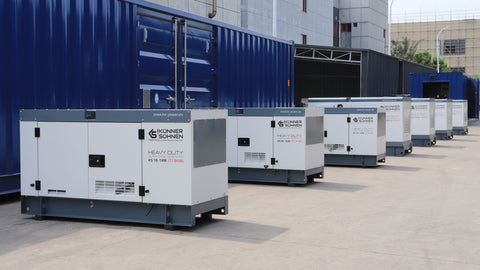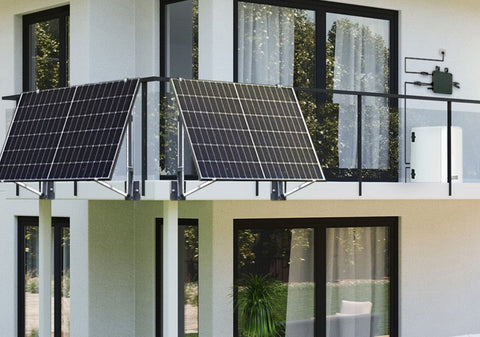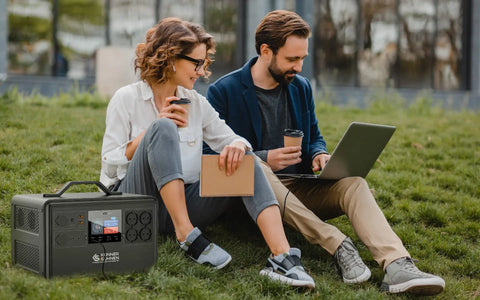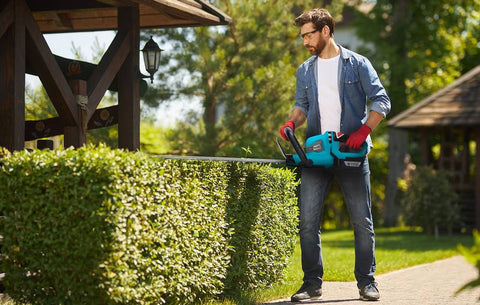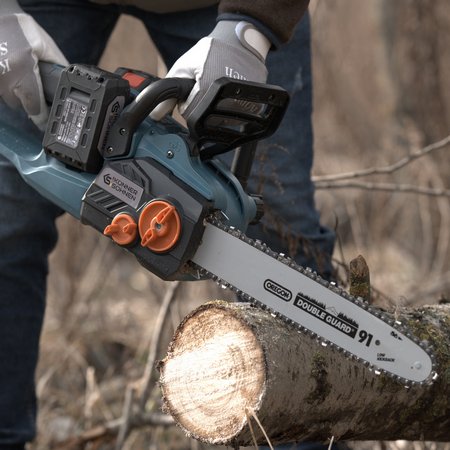Modern heating systems can no longer operate without electricity and it is extremely important to properly design the emergency power supply for such systems.
Such power consumers as the heater must not simply be supplied from the generator socket because the heater requires a TN system with the earthed neutral conductor.
The heating must be supplied either as part of the entire house feed or by a special switching device.
You can find out how to supply your heating system with emergency power as part of a complete home feed-in in our information material on the topic of “Home Feed-in”.
Here we will inform you how to properly supply the heating with emergency power without the entire house feed-in.
Modern heaters usually have electronic control modules that may require a “clean” inverter sine wave voltage. We recommend using our emergency power generators with inverter technology as an emergency power source for your heater.
You'll need to check with your heater manufacturer to see if this will work in your case with a conventional generator (including an AVR). How the heater reacts to potential voltage distortion depends entirely on its design.
The electronics themselves typically only consume the maximum of the voltage sine wave, thus distorting the voltage.
Here's the recommended circuit diagram:

For additional protection, a residual current device can be installed:

The ground screw on the generator must be connected to the main earth bar in the house using a flexible 6 mm² copper cable.
If this is missing (e.g., with a TT outdoor power grid connection), a separate grounding system must be installed for the generator. The generator's neutral conductor must be grounded similarly to the neutral conductor on the transformer station side.
The neutral and ground conductors from the generator must be bridged at the transfer switch. This creates a TN system with the grounded neutral conductor on the generator side.
Operating the generator with bridged N and PE conductors without earthing is prohibited for personal safety reasons.
The Schuko plug can be reversed on the generator without reversing the polarity because the two current-conducting contacts in the Schuko socket are equivalent as long as neither of them is earthed.
The second, free Schuko socket receives the earthed neutral conductor immediately after plugging the cable to the changeover switch into the first socket, since the two Schuko sockets are connected in parallel.
In inverter generators, the voltage is generated electronically, has a much more stable shape and parameters and is recommended for heaters with sensitive electronics.
You can find out whether the respective heater can be powered by a conventional generator or whether it absolutely requires an inverter voltage from the manufacturer of the device, because only the manufacturer knows exactly how his device is constructed and how sensitive it is.
When using conventional generators, we recommend using a resistive load (100W incandescent bulb or IR bulb) to dampen the peak current consumption of the boiler's electronic control system and the associated harmonics.
Voltage (yellow) and current (green) of a conventional generator under electronic load without and with balancing load (100W light bulb):


You can see that the disturbing harmonics marked with the red arrows in the left image are much smaller in the right image and most electronic modules then function without problems.
Here is the recommended connection diagram when using a conventional generator with a balancing load.

It is also recommended to ask the manufacturer of the heater whether the device in question absolutely requires a “clean” sine wave voltage or whether it can also be supplied by a conventional generator.
Not only a light bulb or IR bulb, but any resistive load can be used as a balancing load.
It would also be possible to use such a universal box:

The emergency power supply for heat pumps usually requires a solution tailored to the respective heat pump.
Heat pumps typically require 400V and a lot of power, especially during start-up. Many heat pumps are equipped with electronic phase-cut control, which on the one hand reduces the required start-up power, but on the other hand requires a high level of reactive power, which the generator must provide. The phase-cut control can also cause distortions in the generator's voltage waveform, which can then also have a negative impact on other power consumers in the house. For these reasons, we recommend supplying the heat pump separately. You should ask the heat pump manufacturer what the actual power consumption is in kVA during normal operation and during start-up, and whether the heat pump can be powered by a conventional generator or whether it requires a pure sine wave voltage from an inverter. Heat pumps also have an electronic control system that is supplied with 230V from one of the three phases, and it is important to know whether this control system can tolerate the distortions in the voltage waveform that can be caused by phase-cut control or frequency conversion, which may be used to control the pump's power. In addition, many heat pumps load the 3 phases differently and therefore the emergency power source must be suitable for unbalanced loads, which is not the case with most 3-phase generators.
Remark:
Three-phase inverter generators do not exist. There are only three-phase inverters with a battery storage system, where a generator can only be used to recharge the battery storage. An external charger for the battery storage is required. With such a system, a house could be completely fed into the grid.
Disclaimer:
This manual is intended only as a guide, is illustrative, and must be adapted to the specific circumstances and conditions on site during installation. The installation itself must be carried out in compliance with all standards and regulations. We assume no responsibility for incorrect installations and their consequences.


